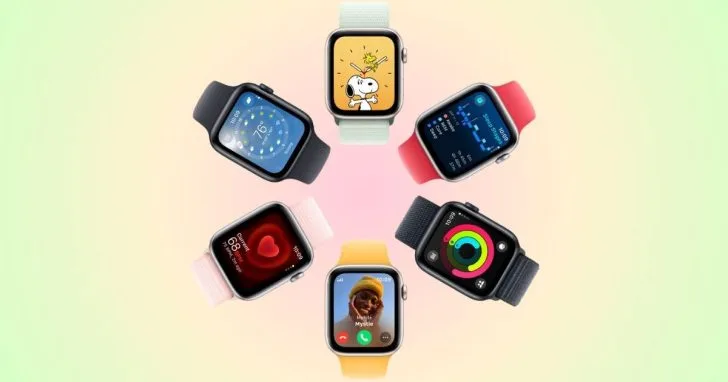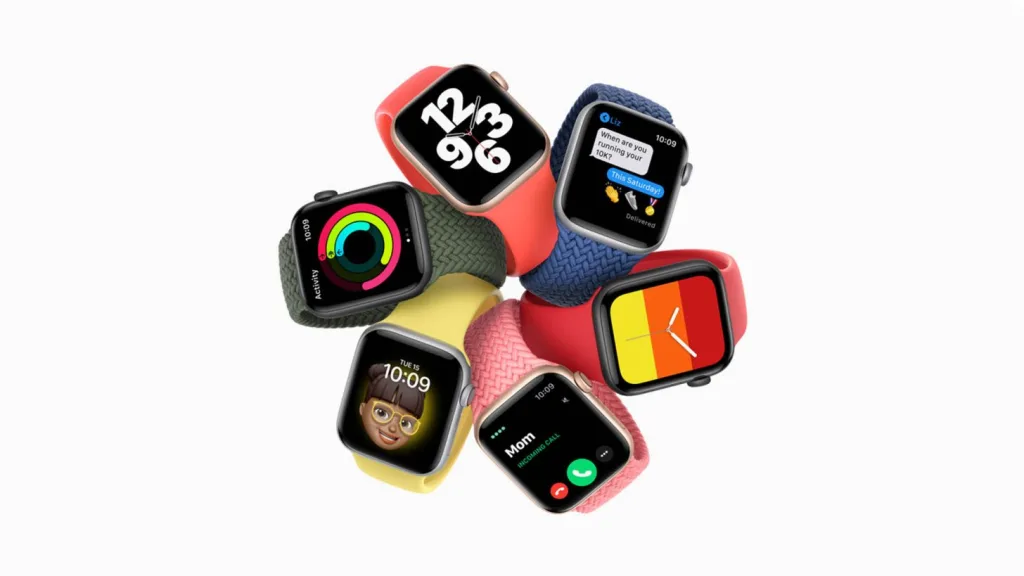Apple is known for its premium materials, but a major shift could be on the horizon. Reports suggest the next-generation Apple Watch SE may feature an all-plastic body—an unusual move for the tech giant. While this change could help Apple cut costs, it has reportedly upset the design team, who are dissatisfied with the smartwatch’s appearance and perceived downgrade in quality.
Table of Contents
Apple’s History with Premium Materials
Apple has built its reputation on sleek, high-quality designs. From the iPhone to the MacBook, the company has consistently used premium materials like aluminum, stainless steel, and titanium. These choices have contributed to Apple’s brand identity, ensuring that its products not only perform well but also feel luxurious in hand.
However, plastic has rarely made an appearance in Apple’s modern lineup. The company’s last notable plastic-based product was the iPhone 5C, which featured a colorful polycarbonate body. While the 5C had its fans, it was not as well-received as Apple’s aluminum and glass devices, and Apple has since stuck to metal and ceramic finishes. Now, with the Apple Watch SE potentially shifting to plastic, it raises questions about how consumers will react to the change.

Why Is Apple Considering a Plastic Apple Watch SE?
Historically, Apple has favored metal over plastic for durability and aesthetics. However, with increasing competition in the budget smartwatch segment, Apple appears to be exploring more affordable manufacturing processes. According to Bloomberg’s Mark Gurman, transitioning to plastic may be the only viable option to maintain competitive pricing while boosting sales in the entry-level market.
Apple faces significant competition from brands like Samsung, Garmin, Fitbit, and even lesser-known manufacturers offering smartwatches at lower prices. By cutting down manufacturing costs, Apple can compete more aggressively in the budget segment without heavily discounting its products.
Cost Considerations and Market Positioning
The current Apple Watch SE is positioned as a more affordable alternative to the flagship Apple Watch models. However, even with its “budget” label, it still carries a price tag that may push potential buyers toward other brands. By reducing material costs, Apple can lower the starting price and attract a broader audience, particularly those who may not have previously considered an Apple Watch due to its price.
Additionally, Apple has historically sought ways to maximize profits without drastically cutting retail prices. If a plastic Apple Watch SE can be produced at a lower cost while maintaining a similar price tag to the metal variant, Apple could increase its profit margins without sacrificing brand positioning.
The Design Team’s Frustration
Despite the cost-saving benefits, Apple’s design team is reportedly displeased with the change. The plastic model is expected to cost nearly the same as the metal variant, making the downgrade in materials feel unjustified. Additionally, concerns about aesthetics and durability could impact the watch’s appeal to consumers accustomed to Apple’s high-end build quality.
Apple’s design ethos has always been centered around crafting products that not only function well but also look and feel premium. The transition to plastic is seen as a step backward in this regard, potentially affecting how the product is perceived in the market.
Durability Concerns: Plastic vs. Metal
One of the key concerns with shifting to plastic is durability. While high-quality plastics can be strong and resilient, they typically do not match the longevity of aluminum, stainless steel, or titanium. Smartwatches are subject to daily wear and tear, including exposure to sweat, accidental drops, and impacts. A plastic chassis could be more prone to scratches, cracks, and discoloration over time, potentially reducing its lifespan compared to metal counterparts.
Apple may incorporate reinforced plastics or composites to mitigate these issues, but the perception of plastic as a lower-quality material remains a challenge. For many consumers, a smartwatch is an investment, and any compromise in build quality could be a dealbreaker.

Apple’s Strategy: Expanding in the Budget Market
Apple’s premium smartwatches have seen declining shipments, partly due to a lack of major innovations in recent models. By making the Apple Watch SE more affordable, Apple hopes to capture a larger share of the budget-friendly smartwatch market. However, the challenge lies in balancing cost reduction with maintaining Apple’s reputation for quality and design excellence.
Apple is well aware of the growing demand for budget-friendly smartwatches, particularly among first-time buyers, students, and individuals who do not need the advanced features of the higher-end Apple Watch models.
By offering a lower-cost Apple Watch SE, Apple can tap into a new customer base while maintaining its ecosystem advantage. Once users are introduced to the Apple Watch experience, they may be more likely to upgrade to higher-end models in the future.
Consumer Reactions: Will Plastic Be a Dealbreaker?
The reception of a plastic Apple Watch SE remains uncertain. Some consumers may welcome a more affordable option, while others may be hesitant to pay nearly the same price for a watch with lower-quality materials.
For users who prioritize aesthetics and durability, the transition to plastic may be a significant drawback. On the other hand, those who are primarily interested in Apple’s software ecosystem and features may overlook the material change as long as the watch performs well.
Apple will need to carefully market the new Apple Watch SE, emphasizing its advantages—such as affordability, lightweight design, and potential durability improvements with reinforced plastics. The company may also introduce new color options or finishes to make the plastic variant more appealing.
What’s Next?
If Apple moves forward with the plastic chassis, it could redefine its approach to affordability. However, whether consumers will embrace the change remains to be seen. Apple is expected to unveil the refreshed Apple Watch SE later this year—stay tuned for more updates.
The move to plastic represents a strategic shift for Apple, balancing cost-effectiveness with maintaining its premium image. Whether this gamble pays off will depend on how well the new Apple Watch SE is received by the market.
Final Thoughts: Would You Buy a Plastic Apple Watch SE?
Would you be willing to purchase a plastic Apple Watch SE if it meant a lower price? Or do you think Apple should stick to its premium materials, even at a higher cost? Let us know your thoughts in the comments below!








